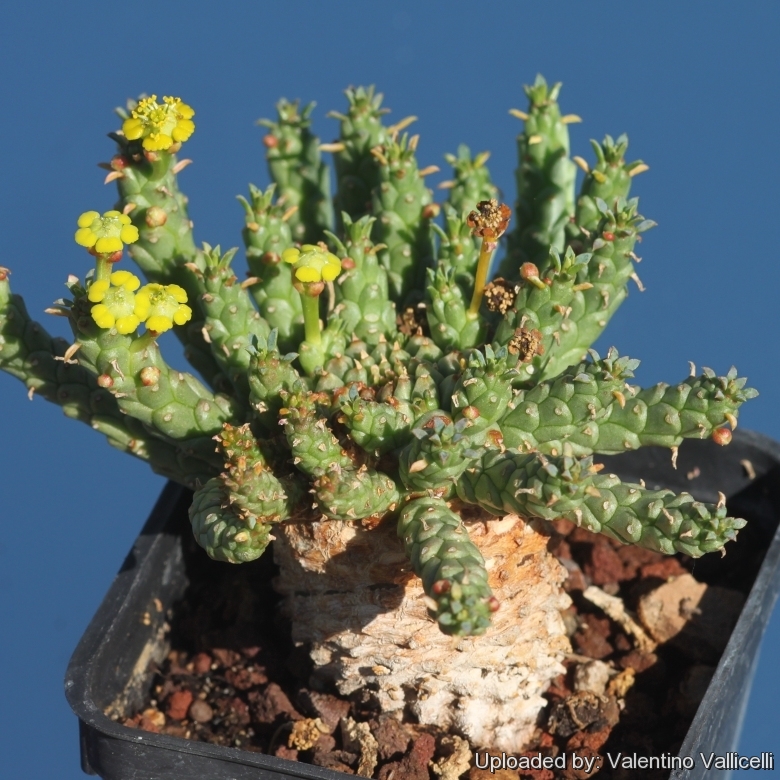
Euphorbia flanaganii Photo by: Valentino Vallicelli
Origin and Habitat: Republic of South Africa, Eastern Cape: border to the former Transkei. (East London and Komgha districts, also recorded at Transkei, Kei Mouth and Mazeppa Bay)
Habitat: It is rather localised in sandy grasslands.
Synonyms:
See all synonyms of Euphorbia flanaganii
back
Accepted name in llifle Database:Euphorbia flanaganii N.E.Br.Fl. Cap. (Harvey) 5(2): 314 1915Synonymy: 4
back
Common Names include:
ENGLISH: Jellyfish Head Euphorbia, Medusa's Head, Medusahoved, Green Crown, Medusa Head
RUSSIAN (Русский): Молочай фланагани
SPANISH (Español): Medusa
Description: Euphorbia flanaganiiSN|23413]]SN|13723]] is a low, spineless, many-branched, succulent to 5 cm tall and 30 cm wide. It is commonly known as Medusa plant, because its prostrate, snake like arms resemble locks of hairs. The central stem merges into roots forming an tuberous body (often called a caudex) with branches radiating from it. If you look down into a large specimen you'll see what looks like a sun flower; it's another example of a Fibonacci spiral. A properly grown plant is a joy, especially when it is in flower, for then each snaky finger is covered with fragrant yellow flowers and the cluster is exquisite. The whole plant produce a caustic milky sap that can cause skin rash, itching and general discomfort.
Similar species: This is one of the caudex-forming Euphorbias, similar to Euphorbia woodii, Euphorbia pugniformisSN|27228]]SN|27228]], Euphorbia esculenta and Euphorbia caput-medusaeSN|13723]]SN|23413]].
Central stem: Flattened or spherical slightly depressed at crown, 3 to 5 cm high, and to 5 cm across, continued below ground as a large fleshy subcylindrical or cylindrical-conical, root-stock.
Radial branches: Up to 3.7 cm long, but often longer in cultivation, especially if not grown in full sun, spreading-erect, 6 mm in diameter or more, tuberculate, radiating from the central tuberculate growing point.
Leaves: Linear, to 10 x 1 mm, deciduous.
Flowers: Solitary, restricted to the apical area of inner (younger) radial branches. Peduncles 4 mm long with 2 -3 bracts to 3 mm long. Cyathium 6 mm in diameter. Nectar-glands 4 - 5, oblong, margin toothed, yellow, separate. Ovary sessile, hairy.
Bibliography: Major references and further lectures
1) James Cullen, Sabina G. Knees, H. Suzanne Cubey “The European Garden Flora Flowering Plants: A Manual for the Identification of Plants Cultivated in Europe, Both Out-of-Doors and Under Glass” Cambridge University Press, 11/ago/2011
2) Urs Eggli “Illustrated Handbook of Succulent Plants: Dicotyledons” Springer, 2002
3) Hermann Jacobsen “Abromeitiella to Euphorbia” Blandford Press, 1960
4) Doreen Court “Succulent Flora of Southern Africa” CRC Press, 01/giu/2000
5) Alain Campbell White, Robert Allen Dyer, Boyd L. Sloane “The succelent Euphorbisae (southern Africa)” Abbey garden press, 1941
6) Werner Rauh “Cultivation and Description of Selected Succulent Plants Other Than Cacti” Smithsonian Institution Press 1984
7) Gibbs Russell, G. E., W. G. Welman, E. Reitief, K. L. Immelman, G. Germishuizen, B. J. Pienaar, M. v. Wyk & A. Nicholas. 1987. “List of species of southern African plants.” Mem. Bot. Surv. S. Africa 2(1–2): 1–152(pt. 1), 1–270(pt. 2).
8) Debra Lee Baldwin “Succulents Simplified: Growing, Designing, and Crafting with 100 Easy-Care Varieties” Timber Press, 21/May/2013
9) Debra Lee Baldwin “Designing with Succulents” Timber Press, 18/Mar/2011
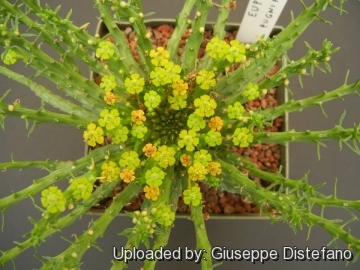 Euphorbia flanaganii Photo by: Giuseppe Distefano
Euphorbia flanaganii Photo by: Giuseppe Distefano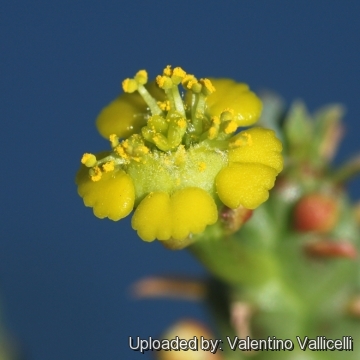 Euphorbia flanaganii Photo by: Valentino Vallicelli
Euphorbia flanaganii Photo by: Valentino Vallicelli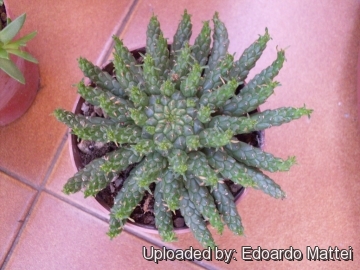 Euphorbia flanaganii Photo by: Edoardo Mattei
Euphorbia flanaganii Photo by: Edoardo Mattei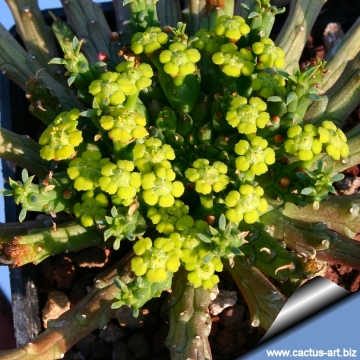 Euphorbia flanaganii Photo by: Cactus Art
Euphorbia flanaganii Photo by: Cactus Art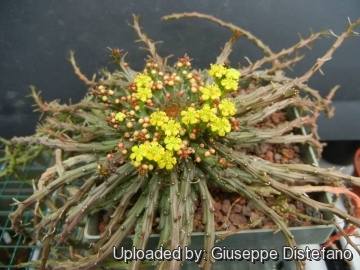 Euphorbia flanaganii Photo by: Giuseppe Distefano
Euphorbia flanaganii Photo by: Giuseppe Distefano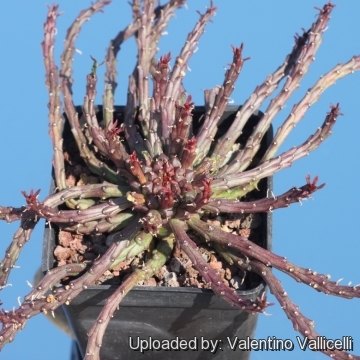 Euphorbia flanaganii Photo by: Valentino Vallicelli
Euphorbia flanaganii Photo by: Valentino Vallicelli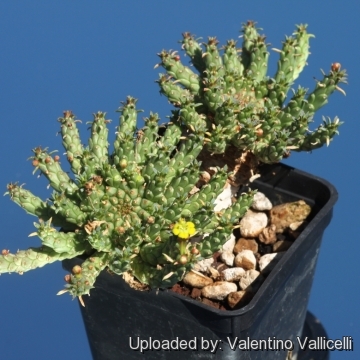 Euphorbia flanaganii Photo by: Valentino Vallicelli
Euphorbia flanaganii Photo by: Valentino Vallicelli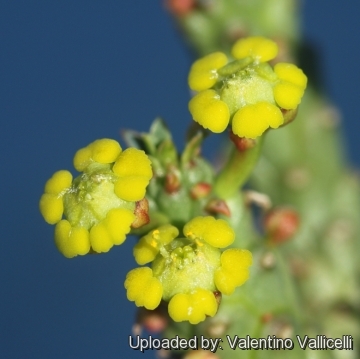 Euphorbia flanaganii Photo by: Valentino Vallicelli
Euphorbia flanaganii Photo by: Valentino VallicelliCultivation and Propagation: Euphorbia flanaganiiSN|13723]]SN|13723]] is one of the most common and easily grown of the medusoids.
Growth rate: This is a relatively fast growing species, offsets readily, and can rapidly fill a large bowl with Medusoid plants.
Exposure: It like a sunny position, but can tolerate moderate shade, and a plant that has been growing in shade should be slowly hardened off before placing it in full sun as the plant will be severely scorched if moved too suddenly from shade into sun.
Soil: It does best in a mineral soil, but is tolerant of a wide range of soil types. Good drainage is essential.
Watering: Water sparingly during the summer months and keep quite dry in winter.
Propagation: Seeds cuttings.
Warning: As with all other Euphorbias, when a plant gets damaged it exudes a thick white milky sap known as latex. This latex is poisonous and may irritate skin, so pay extreme attention not to get any in your eyes or mouth. Cultivated plants must be handled carefully.
Your Photos
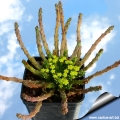
by Cactus Art
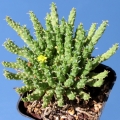
by Valentino Vallicelli

by Valentino Vallicelli

by Cactus Art

by Edoardo Mattei























